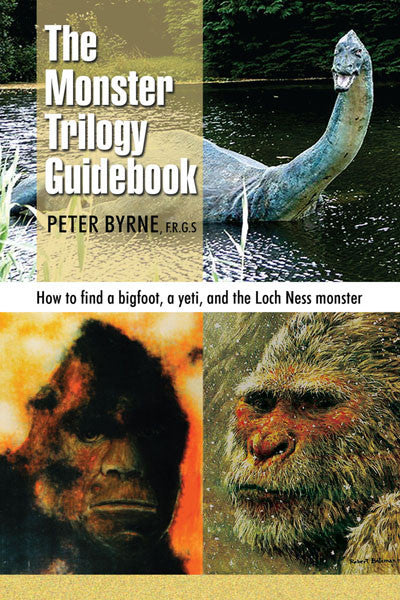

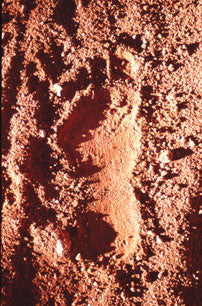
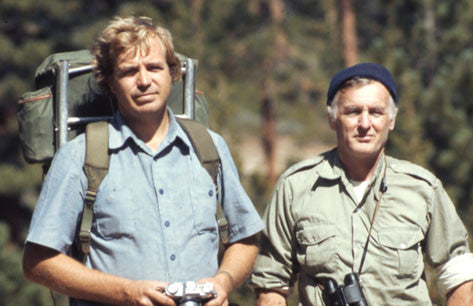
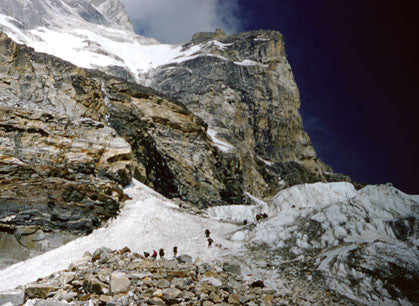
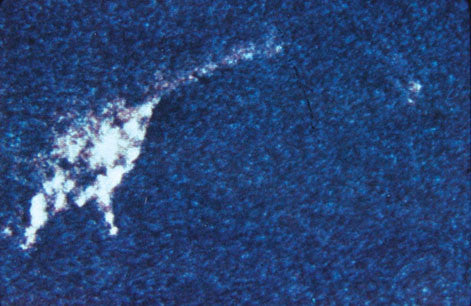
The Monster Trilogy Guidebook: how to find bigfoot, yeti and the loch ness monster
Details
By: Byrne, Peter, Murphy, Christopher L.
ISBN: 978-0-88839-723-2
Binding: Trade Paper
Size: 8.5" X 5.5"
Pages: 176
Photos: 105
Illustrations: 11
Publication Date: 2013
Description
PR Highlights: The definitive guidebook to monster hunting.
PHOTO Highlights: Color throughout; many never seen before.
Sample Chapter
Description: A practical guide combining in-depth knowledge of wilderness exploration and wild animal behavior with detailed information on preparation for large and small expeditions. World-renowned explorer and wilderness guide, Peter Byrne, combines his in-depth knowledge of wilderness exploration and wild animal behavior to produce this unique, practical guide. Focusing on what he considers to be the last three great, unsolved mysteries (the sasquatch or bigfoot of the Pacific Northwest of North America; the yeti or abominable snowmen, of the Himalaya; and the prehistoric monsters of Loch Ness in Scotland) he shares with his readers his decades of experience searching for definitive proof of their existence. But the heart of this book is the wealth of detailed information the author provides on planning large or small expeditions into remote areas, including habitat, pinpointing search areas, obtaining permits and permissions, what staff is needed, travel logistics, general and essential equipment and food, safety tips, and what to do if/when contact is made with the creature. Whether you are a general researcher with an interest in exploring the wilderness or a dedicated monster hunter, this book is both an interesting read and an essential reference. The book is full color throughout and includes many never-before published photographs.
Author Biography
In the world of cryptozoology, Peter Byrne needs no introduction. He has been committed to the search for unrecognized creatures for over 50 years. In his early life, he was a big-game hunting guide in Nepal, a profession that instilled in him a unique knowledge of the ways of wild animals. In the late 1960s he put his professional hunting career behind him and, wanting to give something back, formed The International Wildlife Conservation Society, Inc. in Washington, DC. Working with this organization, he designed and carried out a twenty-year series of wildlife preservation programs in the area of his former hunting concession in Nepal. This work continues to the present day. During this time and later, Peter led expeditions in the Himalayas to search for the yeti, and then pioneered sasquatch research in North America. In the 1970s he joined renowned American explorer Robert Rines in his search for the fabled monsters of Loch Ness.
This guidebook brings to the table Peter's in-depth knowledge of wilderness exploration with valuable advice on wild animal behavior. We are provided with detailed information on how to prepare for expeditions, large or small, what to expect in the way of hazards when in remote areas, and rare insights into how wild animals might react to the presence of humans. Furthermore, we are given Peter's thoughts on the nature of the specific creatures in this trilogy. The work is illustrated with numerous color photographs, many never before published. It is an invaluable resource for researchers who wish to explore wilderness regions for any reason, and a fascinating read for crytpozoology enthusiasts.
Book Reviews
Henry May
May 2013
This book, clocking in at just under 180 pages, really gives some great tips on how to survive in rugged country when searching for either Sasquatch or the Yeti, and also how to see the Loch Ness Monster. He tells the reader what to wear for cold temperatures (which applies especially in the high Himalayas), what kind of equipment to take, what kind of boots to wear and what camping equipment to use. Not a whole lot of specialized equipment is needed to see Nessie other than perhaps a camper to observe and a good vehicle to get there. I do disagree with Peter's notion that Sasquatch only exists in the Pacific Northwest, but this book is written with the wisdom of years of experience searching for these mystery cryptids. There are also some beautiful rare color photos, many never seen before, which truly enhance the book as a whole. I give this one a 9 3/4 out of 10 stars.
Ray Crowe
May 25, 2013
Here is another valuable collectible for cryptozoologists. One can hardly get to the text, being quickly absorbed by the wealth and number of color photos of historic and other fascinating topics. When finally reading the text with extensive coverage of Byrne's early day's monster hunting with his brother Brian and the late Tom Slick and other associates--it whets the appetite of novice monster hunters. One starts with an approach to doing a large or small expedition to collect data on the Pacific Northwest's bigfoot. There is an extensive list of items to consider: Checking in with the Forest Service before entry, equipment, accumulation of inexpensive maps of your search area, and take the time to study in depth the accumulated knowledge of a veteran monster hunter. Byrne has accumulated credible accounts from 125 witnesses over the years and takes a very conservative approach to data collection. There are oodles of useful tips on proper use of equipment, or noting that the creatures are likely to take the path of least resistance and you should construct a hide along possible pathways. Favorite places to lurk quietly are ridgelines and creek bottoms. Byrne doesn't believe the creatures should be killed or harmed. For the abominable snowman hunter, there is a splendid outline of material on Nepal and how to prepare a formal search for the elusive yeti. Everything from how to select a travel agent, and then travel to Kathmandu (Singapore Air), where to rent vehicles, tents, obtain supplies, or permits. It would probably be advisable for an extended expedition to hire a Sirdar (foreman) who will hire any help needed from local Sherpa people to carry supplies or cook meals. There is a long list of sightings and reports of yeti activity to help develop a plan on where to begin your search--with frequent visits with Mr. Google. There is a really interesting study of the plesiosaur-like Loch Ness monster in Scotland, with early reports from the 6th century by a Dean of St. Benedict's Abby. Byrne tells how to get there and the ease of Nessie hunting from auto or boat--with occasional pub stops. Besides numerous photos, Byrne talks of Tim Dinsdale and his many years of searching for sightings. Also, his close association with the late Dr. Robert Rines, founder of the Academy of Applied Science and some of his amazing discoveries and underwater photographs. Byrne develops what he calls a Geo Time Pattern of credible monster reports that take into account the time and place of credible sighting reports, finds of bigfoot tracks, plus using some historical evidence. One is impressed with Byrne's frequently sharing credit for his research with other team members, and wishes everybody good hunting.
Joe Beelart
July 2013
Peter Byrne's new book, The Monster Trilogy Guidebook, is exactly what it should be: a foundation stone of Bigfoot literature based on six decades of well-funded field work in the Himalaya, the Pacific Northwest, and Scotland. In it, Byrne straightforwardly tells the reader he has never seen one of his three monsters; but he assures us they live! And, he encourages the peaceful pursuit of proving their existence. Every serious researcher should purchase a copy and study it. Probably this is not a book for casual or new aspirants in the subjects, for Byrne does not delve deep into history, list tables of sightings, make grandiose claims of times past and for the future, etc. Rather, he tells the serious enthusiast how to go about field research and the reasons for his suggestions based on what is possibly the most field time ever accumulated by one man in any outdoor research. In short, Byrne shares hard-earned experience, and researchers should heed his words. While Byrne barely mentions it, the theme of this memoir is conservation. Only in passing does he mention the great White Grass Plains Wildlife Reserve he established in southwest Nepal under the auspices of the International Wildlife Conservation Society and the patronage of the Nepalese royal family. In conservation circles, the White Grass Plains is widely recognized as one of the most important achievements of the last half of the twentieth century. For his work Byrne was honored with awards by the Royal Geographic Society, London and the Explorer's Club of New York, among other high-profile groups. So, when Byrne encourages ready-at-hand still and video cameras to capture and prove the reality of Bigfoot, the Yeti, and the Loch Ness monster, instead of shooting them with a powerful rifle, we see his concern for the creatures and their future. He also stresses practicing with a camera until it is second nature, for an encounter of a lifetime may last only seconds, or if lucky, minutes; and from experience as an investigator, Byrne tells us when that encounter occurs, in all likelihood the witness will be shaken. In these brief remarks the general value of this book was assessed, the principle of the book established, and a snippet of the many suggestions Byrne makes about field research offered. Now, a few observations about how it is written. Byrne is an expert writer and storyteller. I own at least seven of his books, which include Himalayan and Indian history, novels, and his early Bigfoot book. I have enjoyed every one. So when I say I feel there is a hint of disdain in The Monster Trilogy Guidebook toward our favorite monster - Bigfoot - I have a basis for my comment. Or, perhaps it is more accurate to say Byrne may hold a bit of derision toward a segment of Bigfoot 'researchers' and enthusiasts who were an audience for this book: the gee-whiz folks. Make no mistake; in the sixteen (16) chapters he devotes to the subject, he professionally covers a lot of ground fast, possibly to the point of being brusque. But, there seems to be a lack of understated humor and attraction to the subject which is so prevalent in his other works. It is as if Byrne knows he must address a topic, does so, and then goes on to the next. A telling hint is the title of Chapter 16: Go Get 'Em. Why not something a bit more encouraging like a simple 'onward?' Maybe it's because Byrne has spoken so many times to so many people with gee-whiz attitudes; people that don't read, don't go into the hills, and in the American way, simply want immediate recreational satisfaction from Bigfoot talks and films. There is a decided change in attitude when Byrne writes about the Yeti. Again there are sixteen (16) short chapters, but these are filled with wonder and humor and technical tips beyond compare or imagination. Truly, Byrne's love of the Himalaya shines through in this wonderful section. It is contagious. And in the Himalaya I'm quite sure Byrne did not speak to crowds, or perhaps hold back information due to contract constraints as may have been required in his Bigfoot research. Finally Byrne talks about the Loch Ness Monster. This section will make you smile. For certain, Byrne was on a hillman's holiday as he rode the boats, glassed the waters, and enjoyed pleasant hospitality searching for one of the most celebrated monsters in the world. And in this section, in quiet ways, Byrne pays both tribute and respect to the rich men who funded his expeditions. For those rich men knew, when they wrote the checks, that they were engaging a personable, honest, fit, quietly eloquent man who would represent their interests and names in impeccable fashion. Thank those men and the man who lived their dreams, and maybe yours, for this fine book.